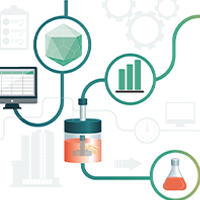Bioprocessing & biological challenges of large-scale red blood cell production from pluripotent stem cells: important factors to consider
Cell & Gene Therapy Insights 2019; 5(3), 483-504.
10.18609/cgti.2019.054
Within just a decade of first deriving human induced pluripotent stem cells (hiPSCs) from somatic cells, continual advancements in the fields of genetic engineering, improved protocols for lineage differentiation and technological developments in bioprocessing and scale-up culture have brought closer the reality of using hiPSCs-differentiated cells for therapeutic applications and regenerative medicine. One such potential is the use of hiPSCs to generate universal red blood cells (RBCs) for transfusion applications. However, unlike most cell therapies, generating RBCs for clinical application poses unique bioprocessing and manufacturing challenges. The need to generate 2 trillion RBCs for each transfusion unit of blood (equivalent to 300 ml of donated blood) requires the development of closed-system bioprocesses capable of handling ultra-high density cultures of cells. In this review, we aim to highlight key challenges associated with developing manufacturing processes for scale-up culture of hiPSC-derived RBCs. Taking into consideration challenges such as the need for large-scale expansion of hiPSCs, culture intensification of erythroblasts, improved enucleation and separation of mature RBCs, and high cost of manufacture, we take a critical look at some of these bioprocessing and biological barriers and highlight critical factors that have to considered in order to circumvent these issues en route to developing a scalable-process for generating high density culture of RBCs from hiPSCs.
